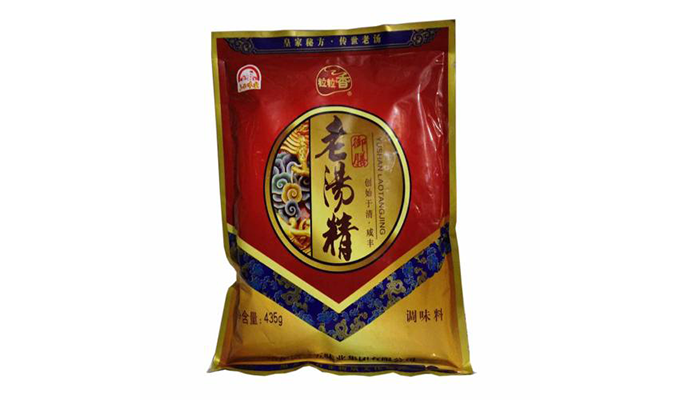Old soup essence formula
The formulation of Royal Food Old Tangjing includes the formulation and production technology of Old Tangjing, which is a valuable cultural treasure in the history of condiment development in China. This technology originated from Liang Zhong, the Royal cook of Xianfeng Emperor in Qing Dynasty. It was a complete set of techniques, including the formulation of old soup, which Liang Zhong studied and experimented repeatedly on the basis of summing up the experience of his predecessors.
According to reports, the soup produced by Liang Zhong was very delicious and was very popular with emperors and court ministers at that time. Later, Liang Zhong sorted out the recipe and techniques for making soup and passed them on to his apprentice, Tang Keming, the Royal chef of Aixinjueluo Puyi in the late Qing Dynasty. Later, Tang Master passed them on to his apprentice, Sheng Yingjie, a Chinese cook master. In order to carry forward the cooking culture of the motherland and inherit and develop this precious traditional recipe, Sheng Lao has been looking for suitable candidates. On June 8, 2009, Sheng Yingjie regarded himself as the most precious Chinese dietary treasure in his life - the secret recipe and production technology of the Centennial Palace soup, and taught him to Mr. Wang Jun, the third national special invitation judge of condiments. Since then, this precious cultural heritage of diet has been inherited by the fourth generation.
In order to make this traditional palace delicacy shared by the people, Mr. Wang Jun, on the basis of inheriting the traditional soup production, used modern sterilization technology to preserve liquid, paste and granular soup essence for a long time. When making the old soup essence, we choose the raw materials such as pig, cow and chicken to extract the flavor. Various spices were added according to the formula and boiled for a long time according to the traditional technology, then concentrated and made into various kinds of old soup essence. This product not only retains the unique flavor characteristics of the traditional soup, but also has a strong aroma, outstanding taste, thick and lasting taste, reflecting the pure Chinese taste, delicious and delicious.
Old soup essence is easy to use, widely used and varied. It not only solves the problem of traditional soup making and saves chefs a lot of time, but also applies to the cooking methods of all dishes such as stir-frying, frying, cooking, roasting, pickling, sauce and brine. It can be used for making dishes, soup, hot pot, filling dumplings and steamed buns, and mixing various cold dishes. Not only can it be widely used in Hotel industry, catering industry and hotel industry, but also it is very suitable for family use.

0 Questions
Ask a Question
Your email address will not be published.